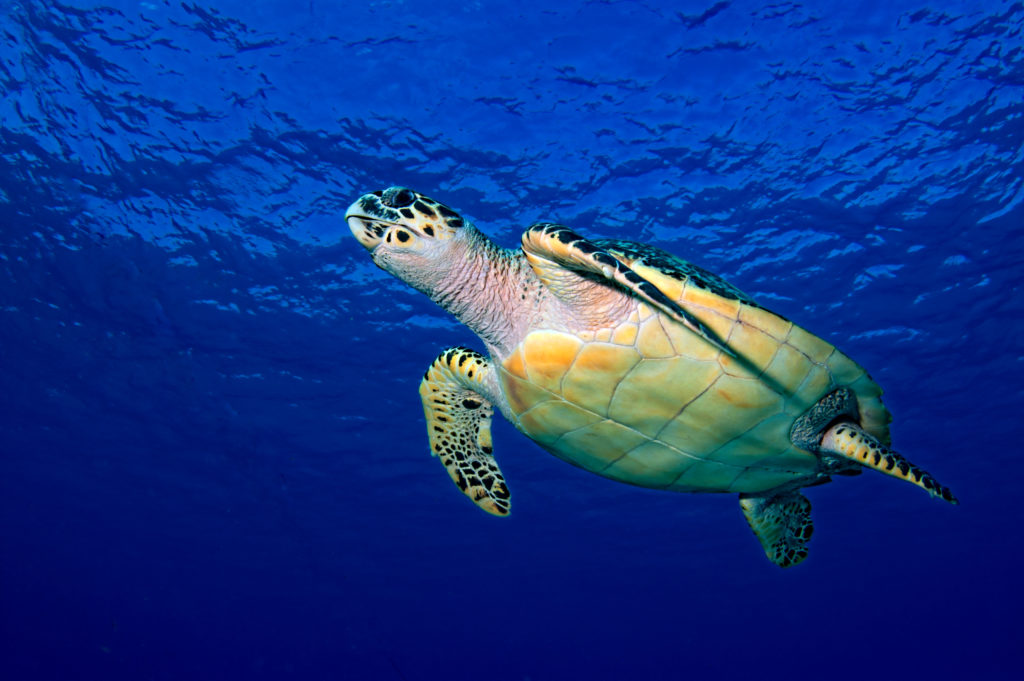By Raquel Gilliland and Breilly Roy; Sea of Change Foundation interns
Welcome to our third “Creature Feature!” Each week we briefly introduce you to some fascinating facts about a sea creature, why it is special and unique, and its conservation status. This week’s creature is the graceful hawksbill turtle. These underwater reptiles belong to the family Cheloniidae. Turtles in this family are the only known turtles that have front limbs stronger than their back.

Hawksbill turtles can be found throughout the tropical oceans of the world, usually occupying coral reefs. As these animals are predominantly spongivores (they eat sponges), their narrow, pointed beaks, resembling that of a hawk, are a useful tool in removing the invertebrates from clefts in the reef.
In 2015, a hawksbill was found near the Solomon Islands during a night dive, but this was no ordinary reptile as this turtle glowed in the dark! Scientists determined that this female was exhibiting signs of biofluorescence. Unlike bioluminescence, biofluorescence is not a chemical reaction within an organism but rather an organism absorbs light and projects it as a different color.
Sadly, hawksbill turtles are listed as critically endangered by the IUCN Red List and are decreasing in numbers. Due to their uniquely decorated shells, they are often harvested illegally and sold around the world despite their protection under CITES (Conservation on International Trade in Endangered Species of Wild Fauna and Flora).
With proper conservation and preservation methods put into practice, such as reducing light pollution, plastic pollution, and nesting beach conservation, this ancient species has the potential to recover its declining populations.




